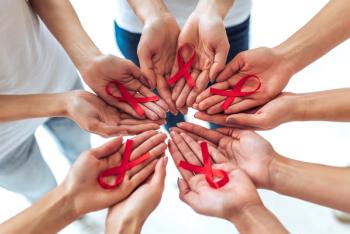
Recognize Dermatologists for Their Role in HIV, AIDS Fight, Review Says
This year marks the 40th anniversary of the initial appearance in the United States of what we now know to be HIV and AIDS, first manifesting as Pneumocystis carinii pneumonia and Kaposi’s sarcoma among gay men and intravenous drug users.
This year marks the 40th anniversary of the initial appearance in the United States of what we now know to be
For their early roles in this ongoing battle, dermatologists deserve more recognition, according to authors of
Their practice encompassed the study of sexually transmitted infections up until the 1950s, the authors of this historical review note, at which point they “relinquished” care of these patients to others. Following a several-decades gap, the HIV/AIDS epidemic necessitated their expertise once more in the study of STIs, also known as venereal diseases, “owing to the cutaneous manifestations of HIV.”
They soon came to serve as some of the first advocates for these marginalized patients. And yet, their contributions have largely been put on the backburner in place of the more widespread recognition given to physicians, scientists, public health experts, community activists, and grassroots organizations.
Marcus Conant, MD, and James Groundwater, MD, were practicing dermatologists in San Francisco in the early 1980s, when they first discussed the appearance of
Friedman-Kien subsequently noted in Journal of the American Academy of Dermatology, “Often the HIV-l–infected patient’s first contact with a health care provider is the dermatologist. In particular, persons who are unaware that they are HIV-1–infected may turn to dermatologists.”
And according to the authors, noted historian Sally Hughes, PhD, emphasizes that during the first 2 years of the AIDS epidemic, Conant’s KS Clinic and Study Group facilitated the biomedical response to AIDS in San Francisco and its leader became a staunch advocate for his patients.
Other dermatologic areas of investigation during this period included HIV transmission via dendritic skin cells, immunology of AIDS in psoriasis, and therapeutics and medication adverse effects. “The contributions of dermatology were, and continue to be, immense,” the review authors note.
At the same time, however, as many dermatologists were working to unravel the mysteries surrounding HIV and AIDS—including through the Gay and Lesbian Dermatology Association—negligence and homophobia toward these patients ran rampant, including from others in the dermatology field. Many did not want to treat the patients, often disparaging them, and at major meetings, such as those held each year by the American Academy of Dermatology.
The present review authors also note that more could have been done but that dermatological research was constricted due to “overt homophobia” and minimal funding, which in turn affected publication of findings and patient advocacy. In JAMA Dermatology alone, “only 3 articles on HIV/AIDS and related cutaneous conditions were published in the 24 issues between 1984 and 1985,” they highlight.
“It is paramount that this history is remembered; 40 years after the HIV/AIDS epidemic began, there is little recognition of the dermatologists who first took up the mantle and dedicated their life’s work to affected patients,” the authors concluded. “This history holds an important lesson, describing a model for dermatology's engagement in clinical care, teaching, research, and advocacy for vulnerable populations around the world.”
Reference
Milbar H, James WD. The role of dermatologists in the early HIV/AIDS epidemic: a historical review for the 40th anniversary of HIV/AIDS. JAMA Dermatol. Published online February 10, 2021. doi:10.1001/jamadermatol.2020.5545
Newsletter
Stay ahead of policy, cost, and value—subscribe to AJMC for expert insights at the intersection of clinical care and health economics.





























































